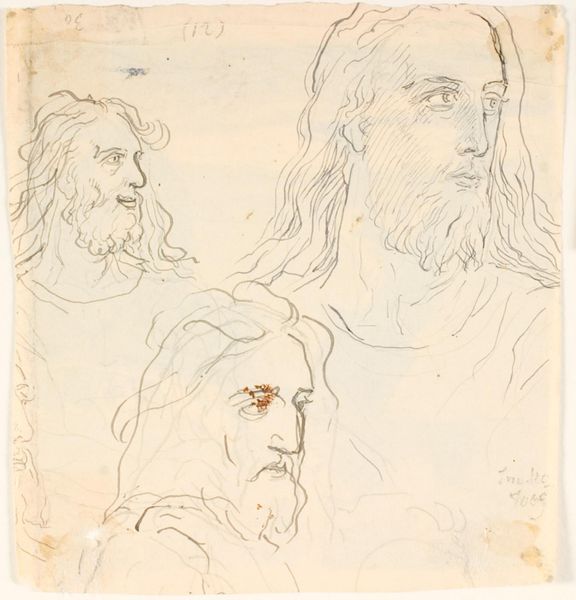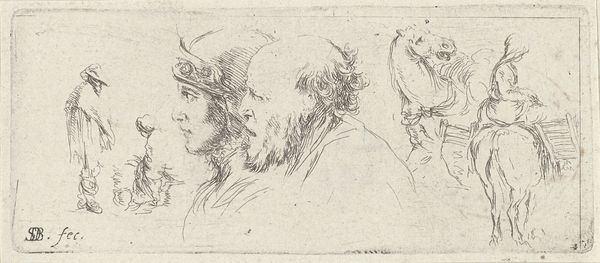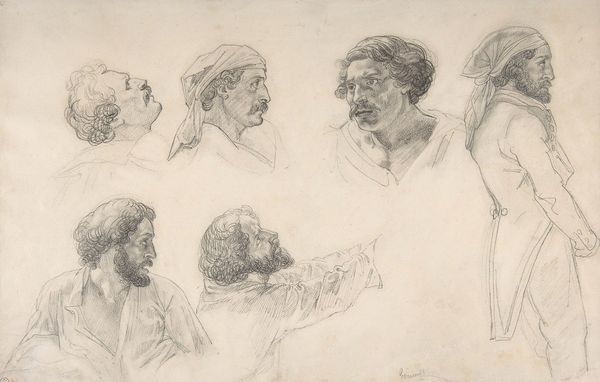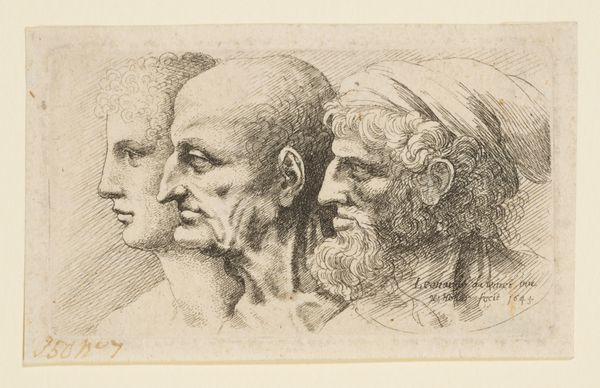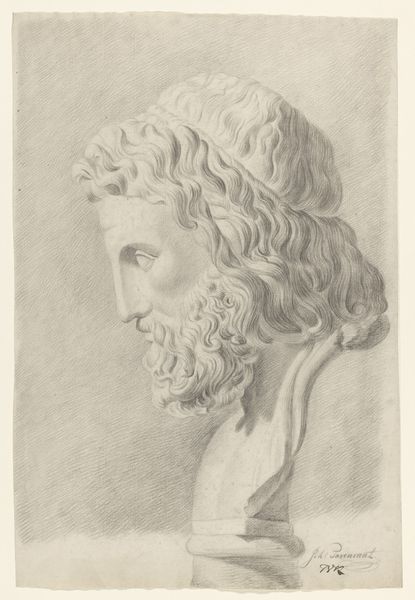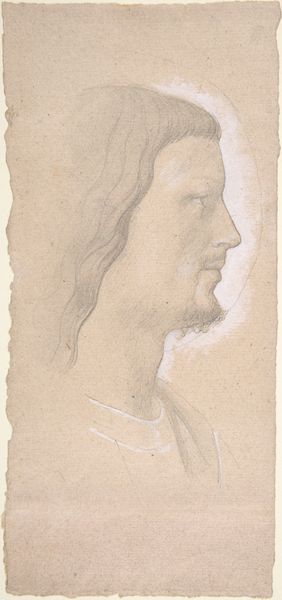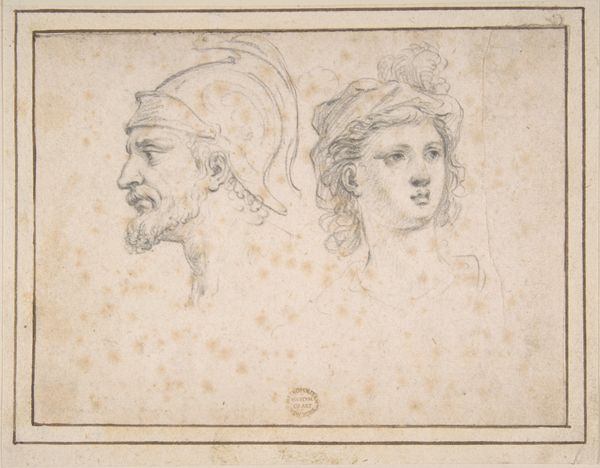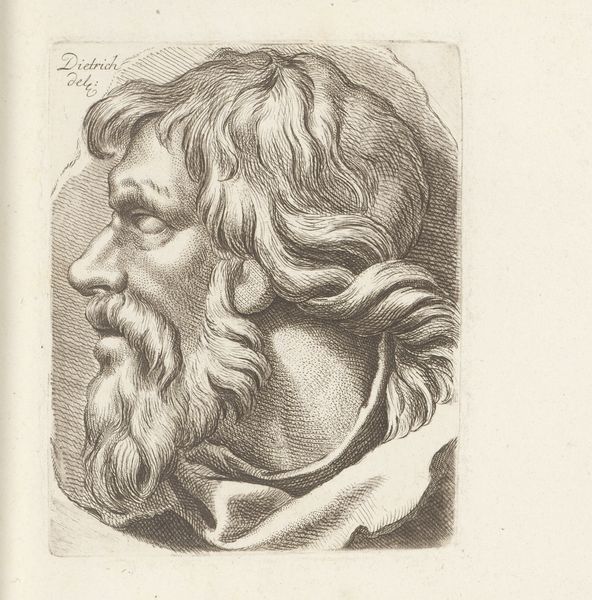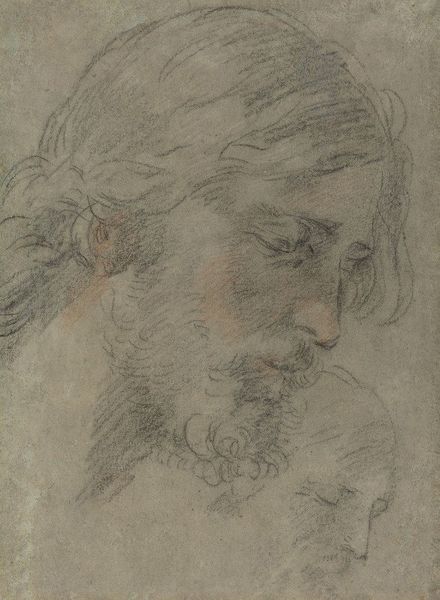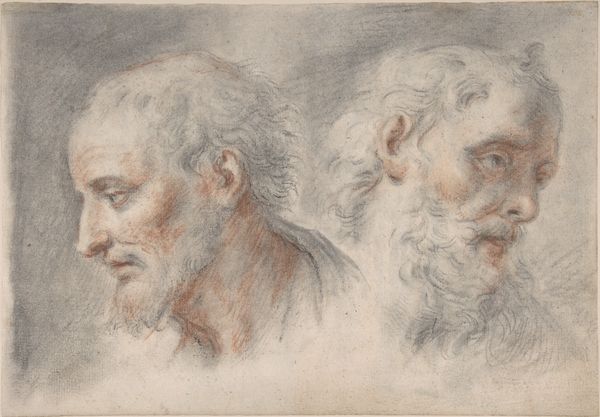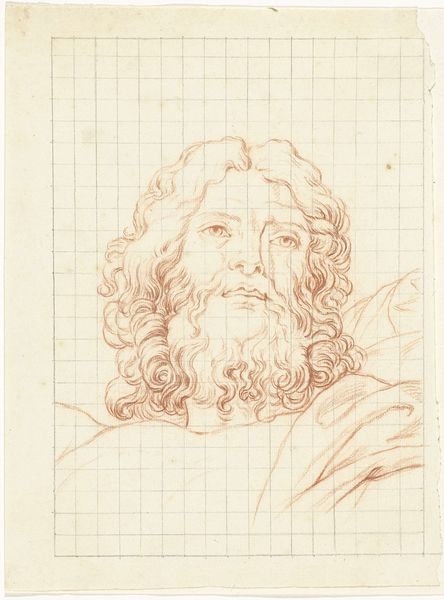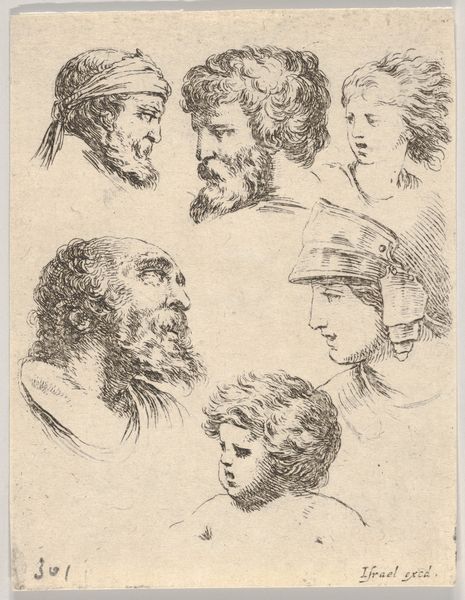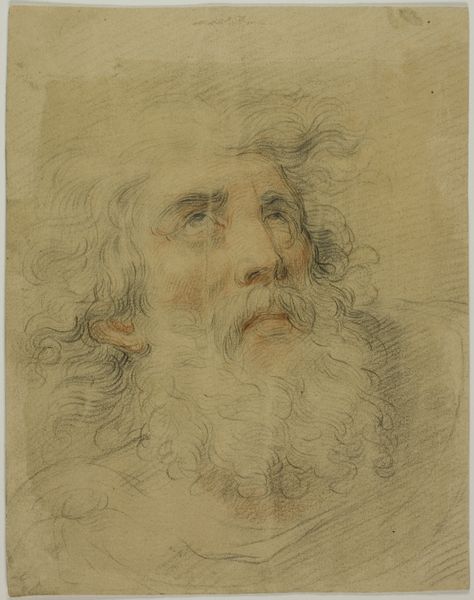
drawing, lithograph, print, paper, engraving
#
portrait
#
drawing
#
lithograph
# print
#
paper
#
portrait drawing
#
engraving
Dimensions: 170 × 267 mm (image); 210 × 270 mm (primary support); 263 × 322 mm (secondary support)
Copyright: Public Domain
Editor: Auguste Gaspard Louis Boucher Desnoyers created this lithograph titled "Two Merovingian Heads" in 1817. The ghostly, faded quality of the print gives the figures an almost ethereal appearance. What catches your eye from a formal perspective? Curator: I observe how Desnoyers utilizes the lithographic technique to produce subtle tonal gradations. Notice the meticulous hatching and cross-hatching employed to define the contours of the faces, creating volume and depth. Consider the interplay of light and shadow; how it models the forms and conveys a sense of weightiness. Are you drawn to the precision in the lines? Editor: I do appreciate the detailed linework, especially in the hair and beards. But why present these figures specifically as "Merovingian Heads"? Does that have any bearing on the artistic composition itself? Curator: The title provides a frame. We must investigate the relationship between representation and reality. Observe how the artist’s interpretation transforms the historical subject matter through the medium of lithography. Does the artist evoke a particular mood through this conscious engagement of the historical? Editor: It definitely lends a sense of antiquity and perhaps even mystery. I see the artist manipulated the lines to convey form and texture, making it compelling to contemplate the relationship between the artist's technique, the historical subject, and the overall aesthetic impact. Curator: Precisely. And what have you garnered about the connection of line and lithography to time period and aesthetic? Editor: That close examination of technique is crucial for grasping not only its formal construction but also the layers of meaning imbued within.
Comments
No comments
Be the first to comment and join the conversation on the ultimate creative platform.
